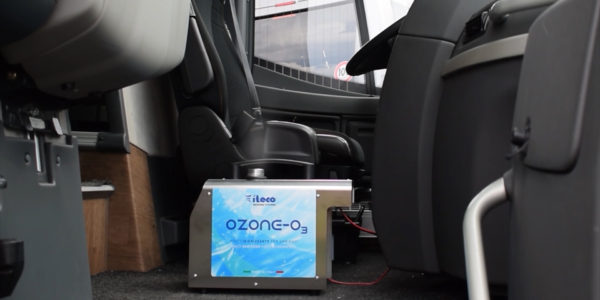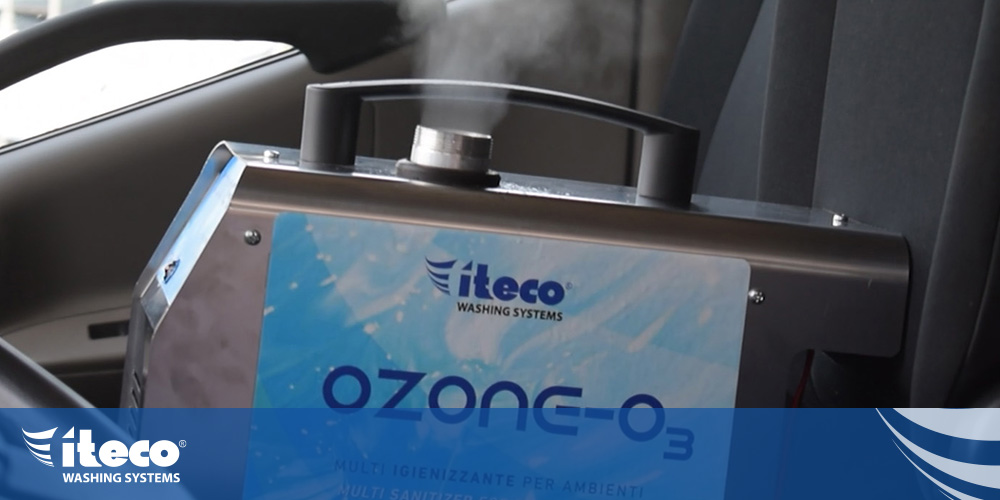Make your transport services safe with the Ozone-O3 multi-sanitation station .
The Corona Virus pandemic has made sanitation operations an important requirement to protect the safety and health of employees and customers.
In addition to the products for external washing, Iteco Washing Systems also has among its solutions the new Ozone-O3 multi-sanitizing station: a portable station designed for the sanitation of closed environments such as transport vehicles (trucks, buses and rental vehicles) and rooms of buildings from 150 a 300 m3.
Double processing circuit
The multi-sanitizing station has a double processing circuit: Ozone generator (O3) and a nebulization system.

The Ozone Generator (O3) allows you to perform air disinfection and the elimination of volatile pollutants.

The nebulization system releases the disinfectant solution based on hydrogen peroxide (H2 O2) into the air, capable of eliminating the presence of microorganisms harmful to health such as viruses and bacteria, even on hard surfaces.
Remote management system
Ozone-O3 also guarantees the safety of the operator in charge of sanitization, thanks to the remote control system via smartphone application.
By downloading the Air-O3 Android smartphone app, you can manage sanitization operations with the bluetooth of your phone while maintaining a safe distance avoiding direct and dangerous exposure to ozone gas.

For information on Iteco Washing Systems’ Ozone-O3 Multi-sanitizing station:




